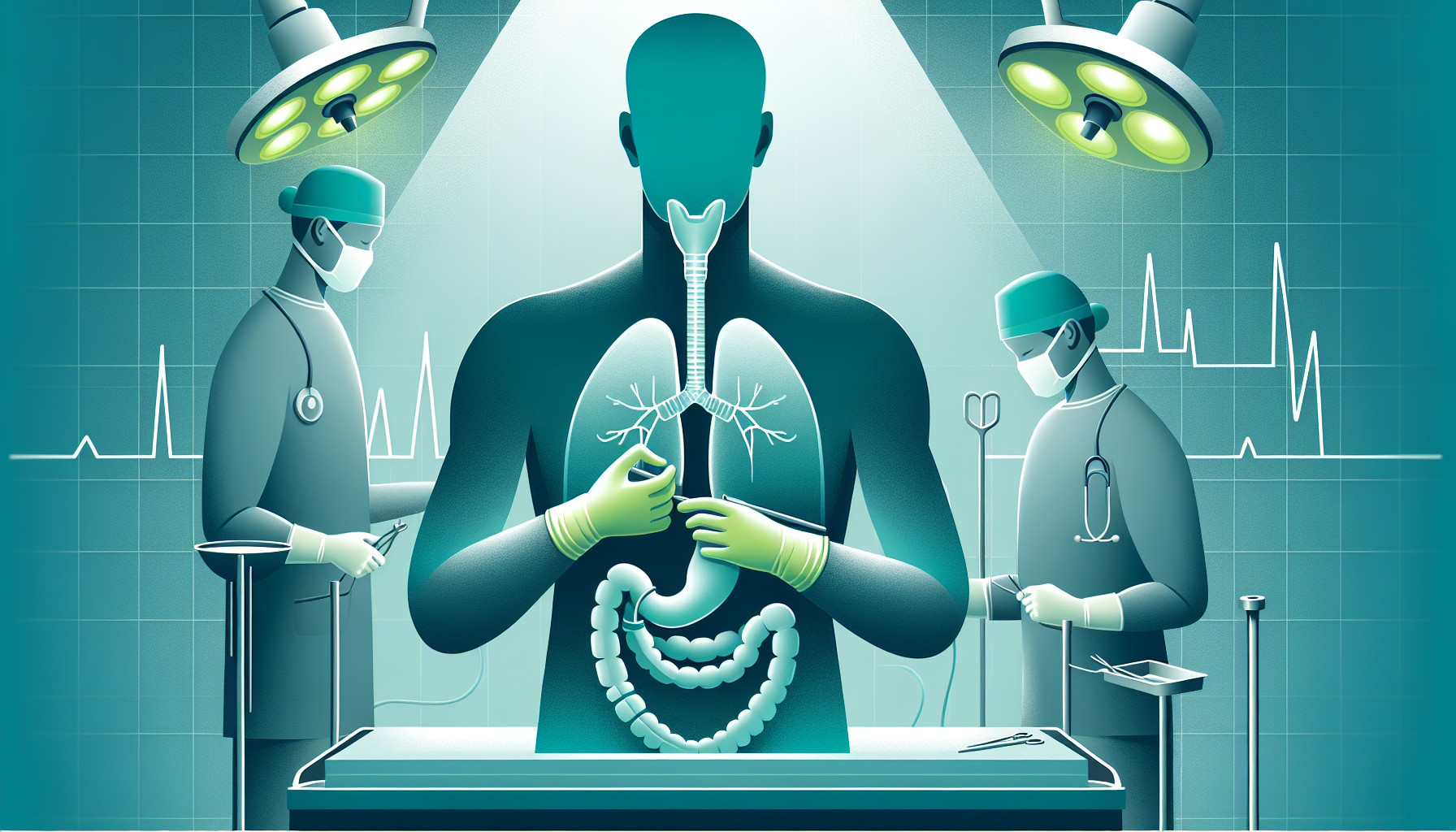Our Summary
In simple terms, this research study investigates a possible way to reduce complications after esophagus removal surgery. Sometimes, after esophagectomy, the stomach (referred to as the gastric conduit) does not empty properly, which can lead to complications. The researchers used a special type of imaging test (upper gastrointestinal contrast study) to see how well the stomach was emptying in the days following surgery.
The study found that patients whose stomachs were emptying completely or partially were able to have their nasal feeding tubes removed sooner and were discharged from the hospital earlier. However, the study also found that patients with signs of delayed stomach emptying had a higher risk of complications after surgery, although these complications were not severe according to a specific scoring system.
The researchers concluded that this type of imaging test could be a useful tool to check the stomach’s emptying process after esophagus removal surgery and could potentially lead to better outcomes for patients.
FAQs
- What complications can occur after esophagus removal surgery?
- How does the upper gastrointestinal contrast study help in the recovery process of patients who have undergone esophagectomy?
- Can the imaging test predict the risk of complications after esophagus removal surgery?
Doctor’s Tip
A helpful tip a doctor might tell a patient about esophagectomy is to follow post-operative instructions carefully, including avoiding heavy lifting, eating small meals, and sticking to a soft diet to allow the stomach to heal properly. It is also important to stay hydrated and follow up with your healthcare team regularly to monitor for any signs of complications.
Suitable For
Patients who are typically recommended for esophagectomy include those with esophageal cancer, Barrett’s esophagus, severe esophageal strictures, or other conditions that affect the esophagus and cannot be treated with other methods. Esophagectomy is a major surgical procedure and is usually recommended when other treatments have been unsuccessful or are not appropriate for the patient’s condition.
Timeline
Before esophagectomy:
- Patient is diagnosed with esophageal cancer or other conditions that require removal of the esophagus
- Patient undergoes pre-operative testing and preparation
- Surgery is scheduled and patient is informed about the procedure and potential risks
- Patient may receive chemotherapy and/or radiation therapy before surgery to shrink the tumor
- Patient undergoes esophagectomy surgery, which involves removing part or all of the esophagus and reconstructing it using a portion of the stomach or intestine
After esophagectomy:
- Patient is closely monitored in the intensive care unit (ICU) immediately after surgery
- Patient may have a nasal feeding tube inserted to provide nutrition while the digestive system heals
- Patient gradually transitions from liquid to solid foods as tolerated
- Patient undergoes physical therapy and other rehabilitation to regain strength and mobility
- Patient may experience symptoms such as difficulty swallowing, reflux, and fatigue
- Patient follows up with their medical team for monitoring and management of any complications
- Patient gradually resumes normal activities and adjusts to life after surgery
What to Ask Your Doctor
Some questions a patient should ask their doctor about esophagectomy and the use of upper gastrointestinal contrast study to monitor stomach emptying include:
- Can you explain why it is important to monitor stomach emptying after esophagectomy?
- What are the potential complications that can arise from delayed stomach emptying after surgery?
- How does the upper gastrointestinal contrast study help to assess stomach emptying in the days following surgery?
- What are the benefits of early removal of nasal feeding tubes and earlier discharge from the hospital for patients with complete or partial stomach emptying?
- What are the potential risks or limitations of using this imaging test to monitor stomach emptying after surgery?
- How will the results of the upper gastrointestinal contrast study impact my post-operative care and recovery plan?
- Are there any alternative methods or tests that can be used to monitor stomach emptying after esophagectomy?
- What can I do to help promote better stomach emptying and reduce the risk of complications after surgery?
- Will the findings of this study change how stomach emptying is monitored and managed for patients undergoing esophagectomy at this hospital or practice?
- Are there any ongoing research studies or clinical trials related to improving outcomes after esophagectomy that I may be eligible to participate in?
Reference
Authors: Klevebro F, Konradsson M, Han S, Luttikhold J, Nilsson M, Lindblad M, Andersson M, Low DE. Journal: Surg Endosc. 2023 Mar;37(3):1838-1845. doi: 10.1007/s00464-022-09695-9. Epub 2022 Oct 13. PMID: 36229553
